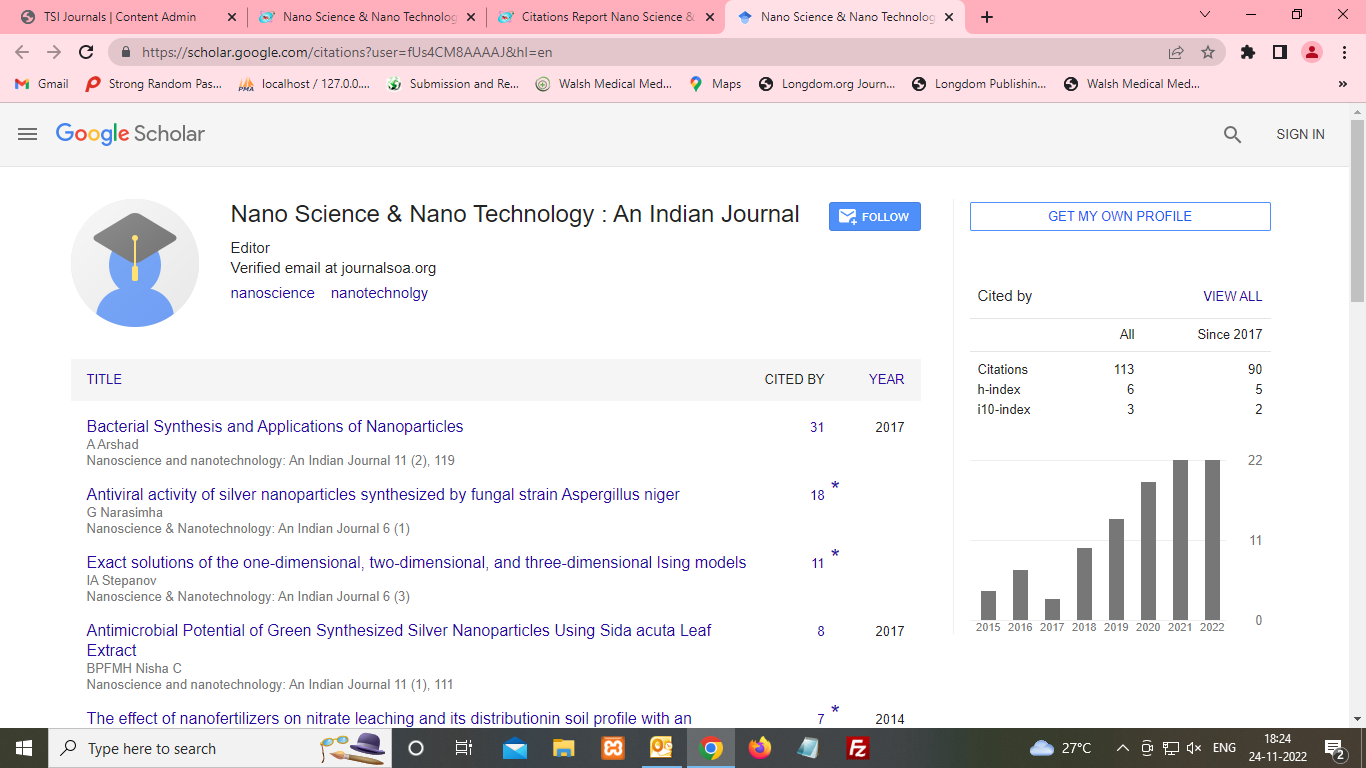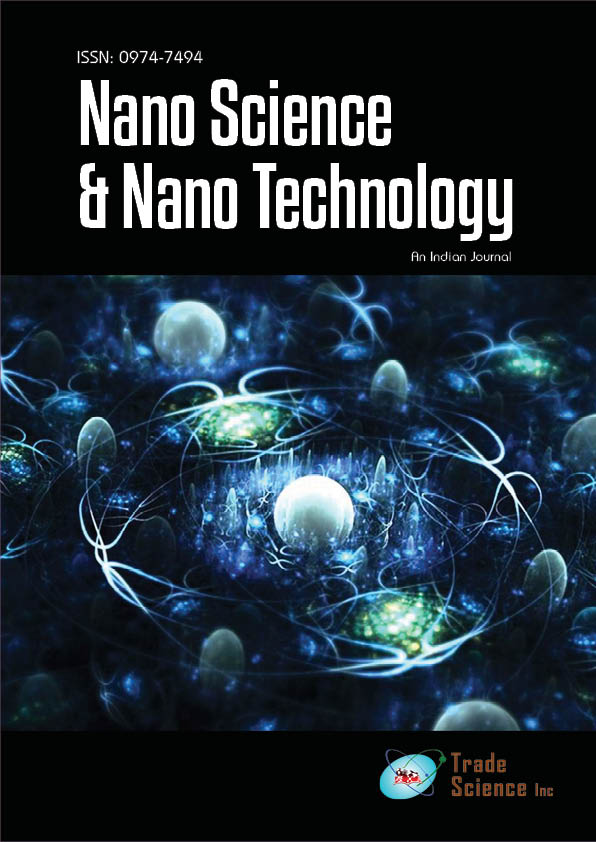Viewpoint
, Volume: 17( 2) DOI: 10.37532/0974-7494.2019.15(1).133Introduction to Nanoscience and Nanotechnology
- *Correspondence:
- Divya Malhotra
Department of Environmental Science
United College of Engineering and Research, India
E-Mail: divyamalhotra@gmail.com
Received: June 11, 2021; Accepted: June 15, 2021; Published: June18, 2021
Citation: Divya Malhotra, Editorial Note on Introduction to Nanoscience and Nanotechnology. Nano Tech Nano Sci Ind J.2021;15(1):133
Introduction to Nanoscience and Nanotechnology
Nano is derived from the Greek word ν?νoς and is well known by the general audience (pronounced nanos). It signifies midget in the literary sense. The prefix nano is used in measurement units in science and technology. 1 nanometer (abbreviated as nm) is a (rather abstract) one-billionth of a metre, to use a length scale as an illustration.
Nano is noteworthy because, in comparison to larger, macroscopic (or everyday) sizes, new characteristics of materials and phenomena (e.g., quantum) emerge at the nanoscale. The nanoscale and the macroscale are clearly separated by a demarcation and a differentiation. Nanoscience and nanotechnology are concerned with the production of materials (even one atom or one molecule at a time) and the fabrication of nanoscale devices (such as sensors) [1,2].
Gold is a non-magnetic, lustrous yellow noble metal that does not tarnish. It has a face-centered cubic structure and melts at 1336 K. A little sample of the same gold, on the other hand, is considerably different, assuming it is small enough: Green light is absorbed by 10 nm particles, which causes them to look red. As the size of the object gets smaller, the melting temperature drops substantially.
Nanotechnologies are concerned with the manufacture and use of particles with a diameter of less than or equal to 100 nanometers. Smaller dimensions lead to new application options in the food sector, such as sensors, antimicrobial surfaces, healthier nutrition composition meals, and thinner, tougher, and less expensive packaging materials. This emphasises the inherent benefits of nanotechnology in the food business, presenting various application possibilities using examples such as nanocapsules, nanoemulsions, nano-covers, biopolymer nano particles, nanocompositions, and nanosensors [3-5].
Another field is molecular nanotechnology, which includes manipulating single molecules in a precise, regulated, and predictable manner. This topic is more theoretical than others, and many of the proposed approaches are technologically impossible to implement right now.
The Atomic Force Microscope (AFM) with high resolution up to 1 nm, the Scanning Electron Microscope (SEM), and the Scanning Tunnelling Microscope (STM) with high resolution up to 0.01 nm have all been developed in response to increased demand for nanotechnology since 1959.
Nanotechnology is an advance science that is rapidly developing. Its potential effect on medicine and surgery is growing, with applications ranging from medication transport to basic nanosurgery at the cellular level. The purpose of this study is to provide a surgeon with an overview of the area, with a focus on its possible surgical applications [6].
References
- Asiyanbola B, Soboyejo W. For the surgeon: An introduction to nanotechnology.J Surg Educ. 2008;65(2):155-61
- E. Roduner. Size matters: why nanomaterials are different. Chem Soc Rev. 2006; 35(7): 583-92.
- Jeevanandam J, Barhoum A, Chan YS, et al. Review on nanoparticles and nanostructured materials: history, sources, toxicity and regulations. Beilstein J Nanotechnol. 2018;9(3):1050-74.
- Buzea C, Pacheco II, Robbie K. Nanomaterials and nanoparticles: sources and toxicity. Biointerphases. 2007;2(4):MR17-71
- Ficzere, I, Zentai, A, Gál, V, et al. Nanotechnologies and nanoscience: novel applications in the food industry. Élelmezési Ipar. 2009;63(3) :65-70.
- Yavuz, M., Irannejad, M., Brzezinski, et al. (2014). An editorial for nanoscience and nanotechnology: An outlook to nanotechnology. Nanosci Technol. 2014;1(1):2.

